
Cephalocereus is a genus of slow-growing, columnar-shaped, blue-green cacti. The genus is native to Mexico.
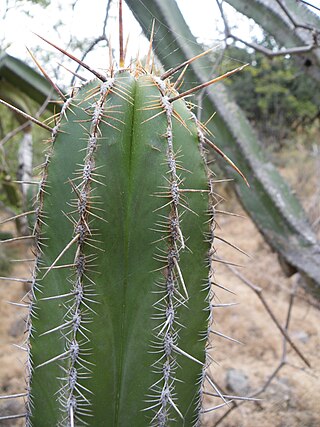
Escontria is a genus of cactus. The only species is Escontria chiotilla, the chiotilla or jiotilla.

Reicheocactus is a monotypic genus of cactus in the family Cactaceae, native to north western Argentina. It has only one known species, Reicheocactus famatimensis.
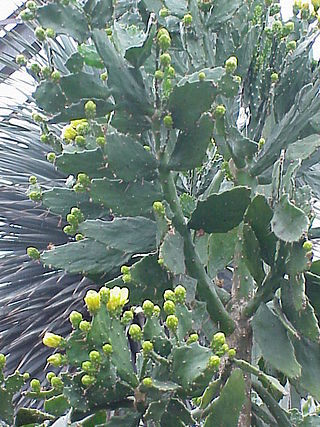
Brasiliopuntia is a genus in the cactus family, Cactaceae. It contains only one species, Brasiliopuntia brasiliensis.

Cleistocactus hyalacanthus is a species of columnar cacti in the genus Cleistocactus. The name comes from the Greek kleistos meaning closed because the flowers hardly open.
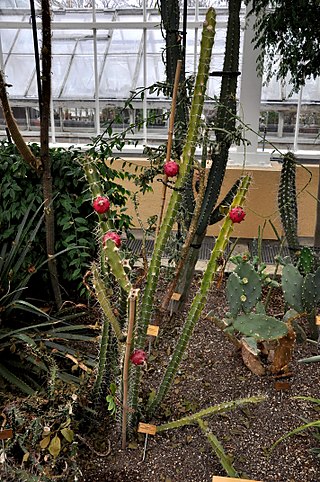
Harrisia bonplandii is a species of cactus. The cactus plants in the Gran Chaco are generally called tuna and this specific variety reina de la noche. Fruits and roots are edible and well known to the native nations of the Gran Chaco.
Harrisia gracilis is a species of cactus found in Jamaica.

Harrisia martinii, commonly called the Martin applecactus, is a species of night-blooming, rope-like cacti native to South America. With large showy flowers that attract the hawk moth, it is considered by some a useful landscape plant in areas that do not freeze.
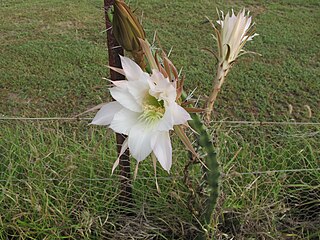
Harrisia pomanensis is a species of cactus.

Soehrensia schickendantzii is a cactus found in northwestern Argentina in provinces of Salta and Tucumán at elevations of 1600 to 3200 meters.

Harrisia tortuosa is a species of cactus in the Trichocereeae tribe.

Stenocereus stellatus is a flowering plant in the family Cactaceae that is found in Oaxaca, Mexico

Soehrensia formosa, is a species of Echinopsis found in South America. In north-western Argentina, Bolivia and northern Chile. First published in Cactac.: Handb. Kakteenk. 3: 1678 in 1959.

Cereus stenogonus, also known as narrow-angled cereus, is a species of Cereus found in Bolivia, Paraguay and Argentina.

Coryphantha erecta is a species of Coryphantha found in Mexico.

Harrisia brookii is a species of cactus found in the Bahamas
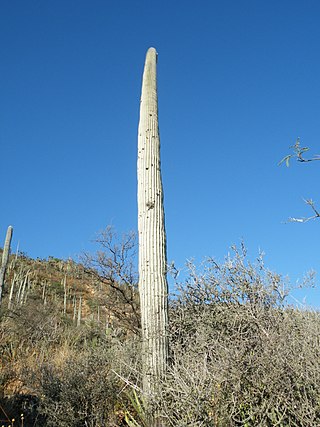
Cephalocereus columna-trajani is a species of cactus from Mexico.

Pelecyphora cubensis is a species of flowering plant in the family Cactaceae, native to Cuba.
Weberbauerocereus churinensis is a species of cactus in the genus Weberbauerocereus, native to Peru.
Harrisia adscendens is a species of cactus found in Brazil.


















